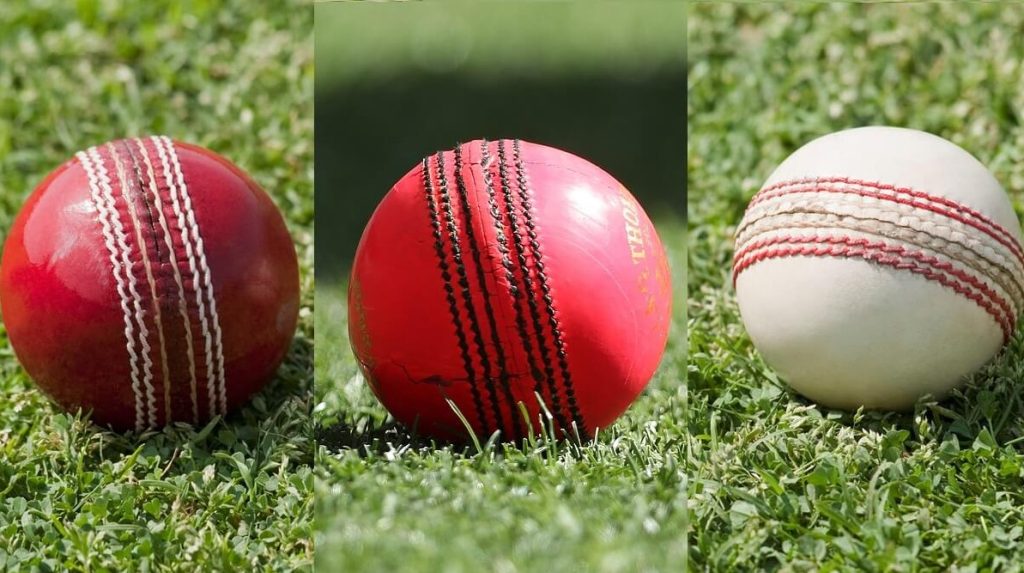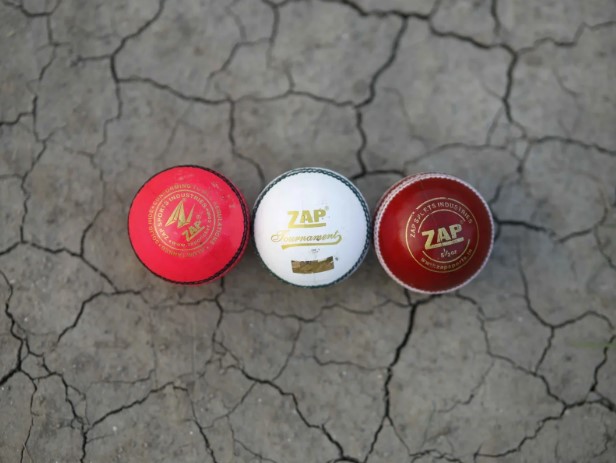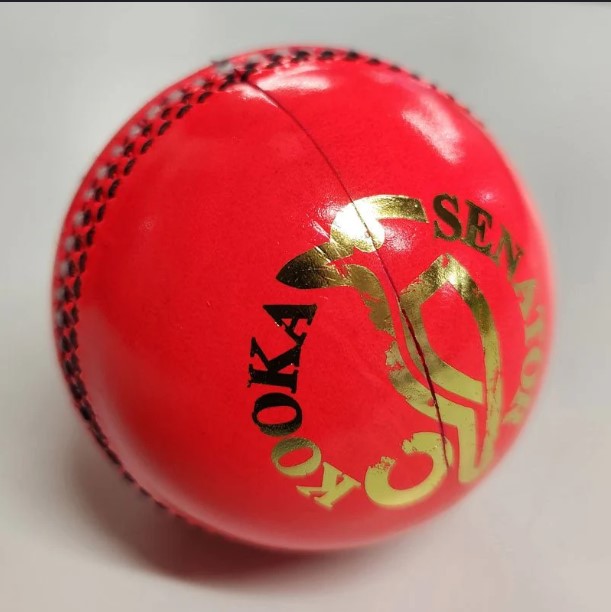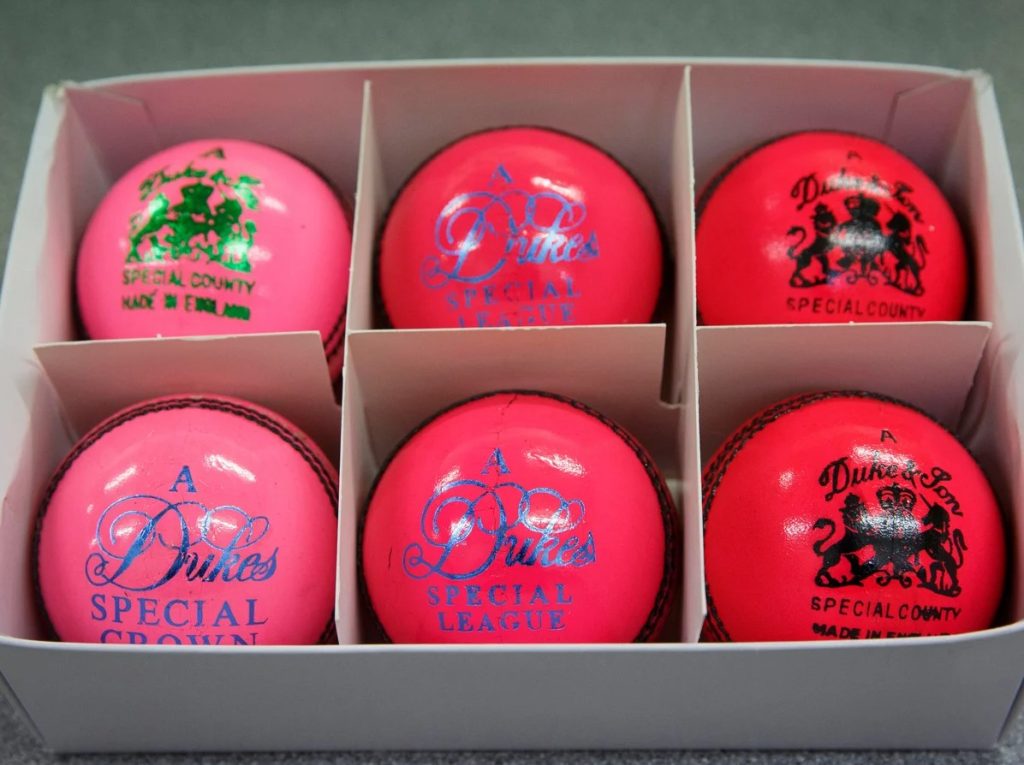Pink Cricket Ball: Cricket is a game that has evolved significantly over the years, with various innovations and changes affecting how the game is played. One such innovation is the introduction of the pink cricket ball, which has been used primarily in day-night Test matches. While the red ball has been the traditional choice for Test cricket, the pink ball’s design, visibility, and behavior have sparked debates among players, coaches, and commentators.
Pink Cricket Ball: A question that often arises is whether the pink cricket ball is harder for batsmen to play compared to the red ball. In this article, we will explore the differences between the red and pink balls and assess their impact on batsmen’s performance. We will look at how factors like visibility, seam movement, and swing affect the way the ball behaves and ultimately influence a batsman’s ability to play effectively.

The Evolution Of The Pink Cricket Ball
Pink Cricket Ball: The introduction of the pink cricket ball was primarily driven by the need for improved visibility during day-night Test matches. The red ball, while excellent for daylight play, is not as visible under artificial lighting. In contrast, the white ball, which is used in limited-overs formats, becomes dirty quickly and loses its effectiveness over time. The pink ball was created as a solution, offering a color that is bright enough to be visible under lights but also maintains its condition for longer periods.
Pink Cricket Ball: Despite these advantages, the pink ball has received mixed reactions from players. Some have praised its performance, while others have criticized its behavior, particularly in the first few overs of a Test match under lights.
Factors Affecting The Difficulty Of Playing The Pink Ball
Pink Cricket Ball: To assess whether the pink ball is harder for batsmen to play than the red ball, we need to explore the various factors that influence a batsman’s ability to handle the ball. These factors include visibility, seam movement, swing, and the wear and tear of the ball.
Visibility
Pink Cricket Ball: One of the main reasons for the introduction of the pink ball was to address visibility issues. The red ball is more difficult to see under artificial lighting, especially during day-night Test matches when the light fades. The pink ball, on the other hand, offers greater visibility, making it easier for batsmen to spot the ball as it comes toward them.
However, the visibility of the pink ball is not without its challenges. While it is more visible than the red ball, it is not as easy to track as the white ball, especially in daylight. The color of the pink ball, which is a blend of red and white hues, can sometimes create a confusing effect under certain lighting conditions, leading to issues with depth perception.
Visibility Comparison
| Factor | Red Ball | Pink Ball | White Ball |
|---|---|---|---|
| Visibility | Good under daylight | Better in low light (night matches) | Excellent in all light conditions |
| Use in Day-Night Matches | Less visible in the evening | Ideal for transitioning from day to night | Not used in Test matches |
| Depth Perception | Stable in daylight | Can be tricky under artificial light | Clear in both daylight and artificial light |
Seam Movement And Swing

Pink Cricket Ball: Another crucial factor in the difficulty of playing the pink ball lies in its ability to move in the air. The pink ball is known to have different seam movement and swing characteristics compared to the red ball. Some studies suggest that the pink ball tends to swing more than the red ball, particularly in the early stages of play when it is new. This is likely due to the lacquer coating on the pink ball, which is thicker than that on the red ball.
Pink Cricket Ball: The lacquer coating gives the pink ball a smoother surface, which can help generate more swing in the air, especially in the first few overs. Batsmen who are not accustomed to the extra swing of the pink ball may find it more difficult to judge and play.
Pink Cricket Ball: However, the additional swing provided by the pink ball does not necessarily mean that it is always harder for batsmen to play. Experienced players who are used to playing against swing bowling may find the pink ball manageable, but it certainly adds an element of unpredictability that can test even the most accomplished batsmen.
Swing And Seam Movement
| Ball Color | Swing Potential | Seam Movement | Ideal Time for Play |
|---|---|---|---|
| Red | Moderate to low | Moderate to high | Ideal during daylight |
| Pink | High | Moderate | Best in early overs or at dusk/night |
| White | High | Low | Suitable for night games |
Wear And Tear

The wear and tear of the ball is another important consideration when assessing its difficulty for batsmen. As a cricket ball ages, it tends to lose its shine, and its behavior changes. With the red ball, wear and tear is relatively consistent throughout the course of a Test match, and batsmen can typically adjust their technique accordingly.
The pink ball, however, has been observed to behave differently as it ages. In the early stages of the game, it tends to swing more, making it harder for batsmen to counter. As the ball wears down, it may lose some of its swing, but it still behaves differently from the red ball. This could lead to a period of adjustment for batsmen, especially those who are more accustomed to playing with the red ball.
Wear And Tear Over Time
| Ball Color | Initial Swing | Swing Over Time | Wear and Tear Effects |
|---|---|---|---|
| Red | Moderate | Decreases slowly | Consistent behavior, easier for batsmen to read |
| Pink | High | Decreases faster | More variation in early overs, harder for batsmen to adjust |
| White | High | Decreases quickly | Becomes dirty quickly, loses swing and bounce |
Bounce And Pitch Conditions
The bounce of the pink ball is also a factor that can make it harder for batsmen to play. Due to its unique lacquer coating, the pink ball tends to stay harder for longer compared to the red ball. This hardness can result in a higher, more inconsistent bounce, which can cause difficulty for batsmen, particularly on pitches that offer some pace and bounce.
However, once the pink ball begins to lose its shine and soften, its bounce can become more predictable, though the pink ball may still behave differently from the red one on certain pitches. This variation in bounce and the unpredictability of how the ball behaves as it wears down can be challenging for batsmen, particularly those who are used to playing with the red ball.
Mental Adjustment

One of the lesser-discussed aspects of playing with the pink ball is the mental adjustment that batsmen must make. Playing under lights in day-night Test matches brings its own set of challenges. Batsmen often have to adjust to playing in different lighting conditions, which can affect their concentration and focus. The glare of floodlights can make it harder to track the ball, especially if it is swinging or seaming.
Additionally, since the pink ball is often used in more intense, high-stakes matches, the pressure on batsmen may be higher, which can further complicate their ability to play well. Batsmen who are mentally prepared for these challenges tend to perform better, but the pink ball still introduces a unique set of obstacles that make it harder to play in certain circumstances.
The pink cricket ball is indeed harder for some batsmen to play, especially when compared to the red ball. Several factors contribute to this difficulty, including the increased swing potential, the harder bounce, and the challenges posed by artificial lighting. However, it’s not all about difficulty—many batsmen have adapted to the pink ball and are able to play it effectively with the right strategies.
The pink ball offers more movement early in the innings, and the shift in conditions as it wears down can make it unpredictable. This increased challenge can make the game more exciting, especially in day-night Test matches where the ball’s behavior changes as the light fades.
Ultimately, whether the pink ball is harder for batsmen to play depends on the individual’s skill, experience, and adaptability. As players continue to familiarize themselves with its behavior, they may find that the pink ball, while challenging, can be played effectively with the right mindset and approach.

